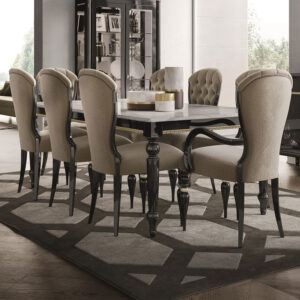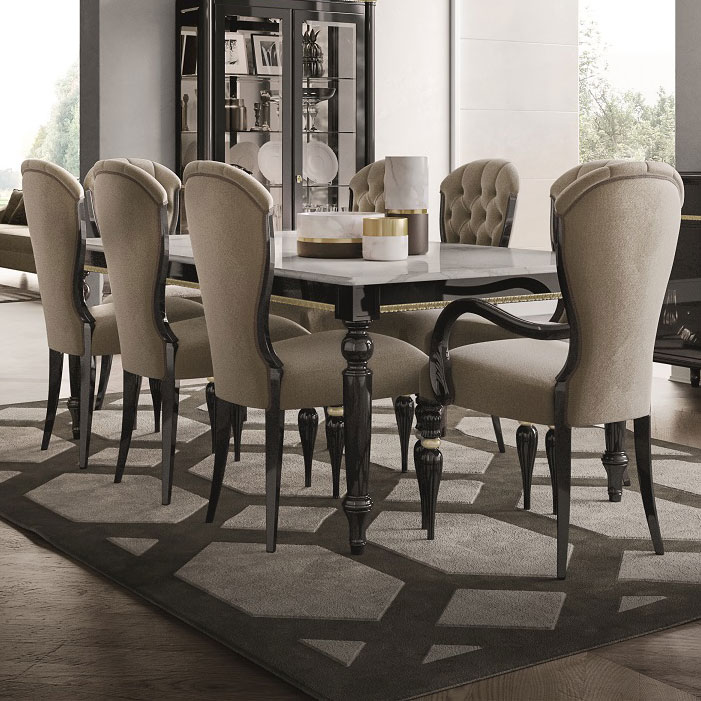
For instance, what’s the difference between traditional and transitional design? You may have heard of both before, but perhaps you’re unaware of the similarities and differences. Understanding both can help you make the most of your home’s design and decor.
Learn more about both of these interior design styles in this guide, and find out which is right for you.
What Is Traditional Design?
Traditional style in the interior design world refers to pieces and elements inspired by the 18th and 19th centuries, often incorporating elements of European decor. Pieces reflect historical design elements and bring a sense of warmth and luxury to the home.
Traditional interior design focuses on consistency and creating a calm and orderly space. When you look at rooms designed with this style in mind, they look elegant and comfortable, creating an orderly upscale vibe.
Elements of Traditional Design
Furniture in this style often has curved shapes, ornate woodwork, and warm tones. Rich, dark wood works well, for example.
Neutral walls pair with high-end furniture to create a classy and inviting look. Other common elements include draperies, elegant fixtures, and varying patterns.
Rarely will you see any bold, bright colors in traditional design. For instance, neon orange would look out of place, and any contemporary design elements can throw the look of the room off. Transitional style blends elements together, but we’ll touch more on that later.
That said, color does have a place in the traditional style, such as a beautiful patterned rug in the living room or accent pillows on the sofa. Color and texture can also be added with drapery and wall art.
Popular colors in this style include brown, red, and green. The color scheme might be bold or muted, but too many designs and graphics can affect the feel of the room.
One of the more common design influences is the regal look of England and Europe from that time period. That means heavy furniture, ornate designs, and tufted upholstery.
Classic Pieces
If you’re putting together a room or styling a home in the traditional style, there are some staple pieces you can add to pull it off.
For instance, the Queen Anne chair looks right at home in traditional design. It features curved lines, cabriole legs, and a plush seat. Wingback chairs are also common in this style, as a piece that offers both class and comfort.
In the bedroom, you’ll see more pieces made of dark wood. Heavier furniture works well in this style. A tufted headboard, for example, can elevate the look of the bed and create a room fit for royalty.
For decor, imagine chandeliers, candle holders, vases, exquisite china, and a lot of silver and gold.
Fabrics tend to be heavier and more ornate. Quality drapery and valances are common elements of the traditional home. Imagine silk, velvet, and leather with damask or paisley prints throughout.
What Is Transitional Design?
Transitional interior design mixes elements of traditional decor with more modern finishes and furniture. The idea is to celebrate the beauty of traditional furniture while adding the best elements of the modern age.
So, what does that mean for design? Put simply, transitional styles are less formal in appearance. The rooms may look more relaxed. It’s a combination of the classic curves and detail but with softer lines and plush furniture.
Some may call it a less fussy take on the traditional look.
Elements of Transitional Design
Transitional homes always feel up-to-date and contemporary. This style is a popular choice among homeowners who may love the look of traditional pieces but want a home that incorporates modern trends, styles, and technology.
Furniture silhouettes are sophisticated, with slightly more rounded profiles. For instance, a plush sofa would look more at home here, but it can be paired with dark wood frames and accents and textured pillows.
Similar to traditional design, the neutral palette is key. Neutral colors help to create a feeling of serenity. In the bedroom, for instance, you might see a palette of tan and brown with taupe or off-white.
In terms of fabrics, you might see linen, cotton, and denim with upholstery fabrics that are designed to be durable. Rooms may have a monochromatic look, with pops of texture for visual interest.
On the walls, you might see geometric molding and European shams mixed with a cotton throw on the bed. Transitional design is often compared to the “resort look” or the feeling of an upscale hotel.
Classic Pieces
Balance is a key aspect of transitional design. This can relate to symmetry, of course, but it also means balancing elements of style. For instance, taking feminine influences and masculine ones and blending them together.
Transitional styles take aspects of historical design and blend them into contemporary homes. Your home might feature a stunning fireplace with architectural detailing, a velvet sofa, a textured rug, and a more modern coffee table.
Think of pieces that are a mix of luxury and comfort. Find a balance between them to pull off a transitional design.
Traditional and Transitional Design: Which Is Right for You?
So, now that you know a bit about traditional and transitional design, you likely have an idea of which style you lean toward. Choosing which one is right for you is a matter of preference. However, you might want to start with the style of your home.
If you have a historic home, the traditional style works very well. In contemporary homes, the transitional style blends elements of traditional decor with more recent trends.
For either style, you can find a variety of quality pieces at Michelangelo Designs. Our upscale Italian furniture will look right at home. Set an appointment for an in-person visit or contact us to discover your new favorite furniture pieces.

